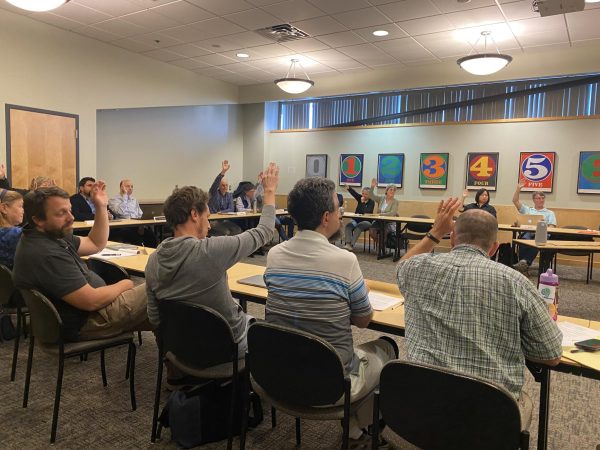UW restructure still needs more clarity
There is nothing more unnerving than not knowing all of the details of a plan that could very well change your life. This is how many students felt when the UW merger was first announced, and so far there hasn’t been much more done to clarify what exactly will happen after the three campuses merge.
Students deserve clarity and full transparency on what is going on at their university, and UW Oshkosh has failed to do so with the upcoming merger.
It has been made crystal clear that students will still be able to transfer their credits between UW schools, the campuses will still have the same academic programs and tuition will stay the same, at least at first. However, what hasn’t been as clear is what will happen to each campus’ student organizations, athletics, clubs, etc. It’s unknown what is to change for students’ everyday lives on campus.
UWO Chancellor Andrew Leavitt said the three campuses will retain their independent athletics teams and mascots.
“As far as athletics are concerned, it’s most likely going to be the recommendation that we allow each campus to keep their current athletic programs and in turn keep their own mascots associated with the athletic programs,” Leavitt said. “I think these on the Fond du Lac and Fox Valley campuses, I think these are important programs that help provide students with some sense of school spirit and identity, and we want to keep it.”
Since each campus gets to keep their own teams, it would be reasonable to hope and assume that student organizations get to do the same. However, you know what they say about assuming.
Oshkosh Student Association president Jared Schadrie said it depends on what the committee decides for how campus events and activities will look after the restructure.
“Depending on how the seg fee committee decides, activities may look a bit different if they decide to integrate events and allow students to go to other campuses for events,” Schadrie said. “Otherwise, the way we call ourselves and each campus might be different and change the perception of our University.”
Leavitt said it is unlikely any changes will occur on any of the three campuses in the next year.
“I think that in time it’s going to profoundly impact, in a very positive way, how students experience this University,” Leavitt said. “What will happen on July 1 will be a little less profound in that it’s going to take us most likely a year or maybe even two years or possibly three years to fully flesh out all the different aspects of restructuring.”
While it makes sense that three different campuses and universities can’t become one overnight, it raises the question of what will happen to them in the meantime.
Perhaps the changes will be so subtle over the next three years that students will hardly notice, or maybe there will be constant changes that students will have to monitor in order to know what’s going on. Either way, it’s unfair to present and future students to not have a clear plan on what will happen in their everyday lives on campus.
OSA vice president Brett Spangler said he thinks the merger will ultimately have positive effects on students.
“I think the net effect will be immensely positive,” Spangler said. “The concept of ‘three campuses, one university’ is very powerful. I see it as having strength in numbers, and that by joining together, we’ll be able to put the positives from each campus together to improve overall enrollment.”
While Schadrie agrees the merger is an opportunity for positive changes, he feels it is ultimately up to students to decide what they think of it.
“I think there is a lot of opportunity to have positive change on all three campuses,” Schadrie said. “I really believe it is up to students to take this change and make it the way they want to see and advocate for what they want to see.”
Part of the purpose of the merger is to increase enrollment; however, so far there hasn’t been much of a noticeable difference in enrollment. Leavitt said after the restructure, UWO will be taking on the access mission which should help increase admissions.
“We’re going to be providing multiple pathways for students in this region and beyond to interact with this institution, and we’re going to be a single institution that offers certificates, associates degrees, baccalaureate degrees, master’s degrees, doctorates all under a single roof,” Leavitt said. “So, we’re going to be much more expansive. Now since we’re also taking on the access mission, which allows us to greet students who have graduated from high school but may have some issues with academic preparedness or have issues finances, we’re going to give them a way to get into this institution so they too can experience the benefits of higher education. Our goal is to raise the education attainment rate of this region.”
The confusion that still surrounds the merger needs to be cleared, and the only way to do that is to be honest with students and faculty about what is going to happen throughout the restructure and after it finishes.









